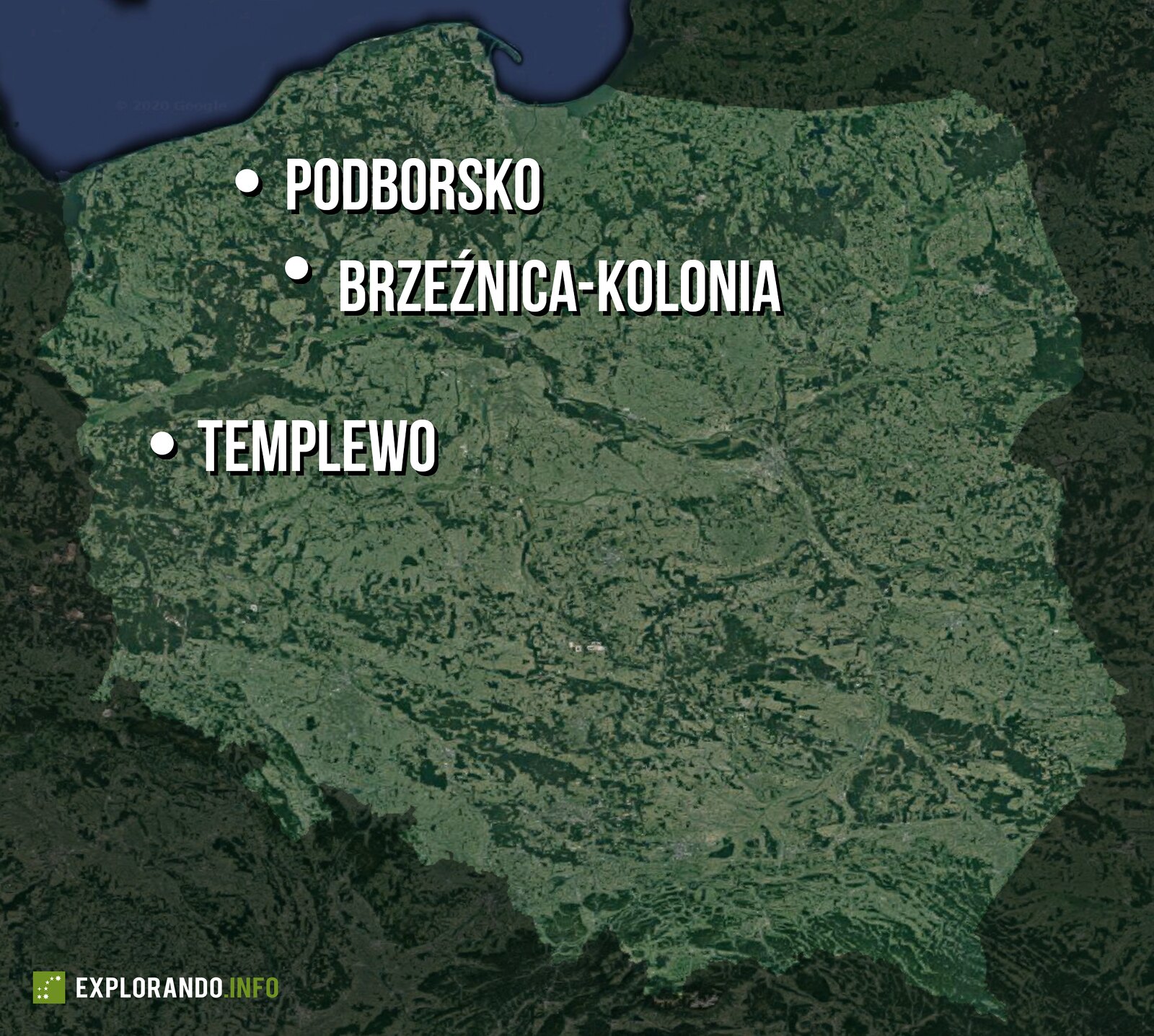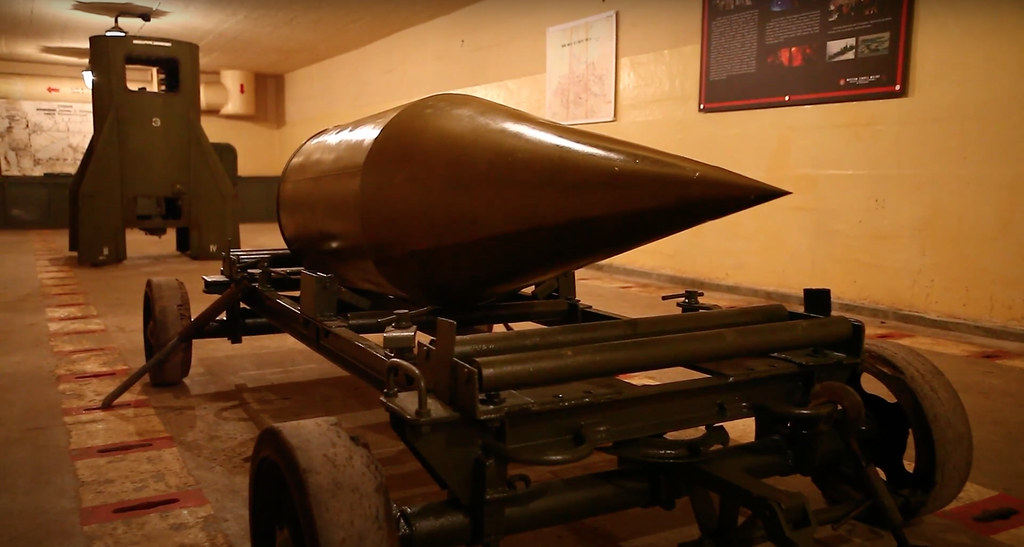Vistula Program: the terrible secret that the USSR hid from the Poles on their own soil
At the end of World War II, Poland went from the German military occupation to being subjected to the Soviet occupation, becoming a satellite of the USSR.
When Poland was a satellite of the Soviet Union
With the establishment of a communist dictatorship, Stalin subdued the old enemies who had defeated the Bolsheviks in the "Miracle of the Vistula" of 1920 and made Poland a mere satellite of the USSR. That involved the installation of Soviet military bases on Polish soil, some of them secret. The most secret of all the Soviet facilities in Poland were in Podborsko, Brzeźnica-Kolonia and Templewo, in the area of the country that had been part of Germany before 1945, passing to Poland in compensation for the loss of the strip known as Kresy, which the Soviets invaded in 1939 and never returned to the Poles (today it is part of Belarus and Ukraine).

A program on which Russia continues to keep the most absolute secret
According to the Polish historian Jarosław Pałka, in 1965 the Soviet dictatorship determined that, in the face of an atomic war, the deployment of nuclear weapons in western Poland was essential. Thus began the so-called "Vistula" Program, also called "3000", which "was one of the best-kept secrets in Communist Poland," according to Pałka. The very little documentation that exists in Poland about this program (only three files) was made available to historians in 2006. All the other secrets of that program are still kept in the Russian military archives, as to date they have not yet been revealed.

The search for a location for the Vistula Program began in the fall of 1966 by a Polish-Soviet commission, which took into account road and rail access and camouflage possibilities for the secret base. Finally the village of Podborsko was chosen, designated with the key code "3001", along with Brzeźnica-Kolonia (3002) and Templewo (3003). The agreement to store nuclear weapons in Poland was signed on February 25, 1967 between Marshal Marian Spychalski, Defense Minister and a member of the Polish communist elite, and Marshal Andrei Grechko, Defense Minister of the USSR. Significantly, there has been no record in Poland of any decision of the Polish Government to authorize this installation: apparently the USSR sent a document of approval to Spychalski only for purely formal purposes, since the decision had already been taken by Moscow by the Poles, as it had done before with Czechoslovakia, Bulgaria, East Germany and Hungary.

The Soviets told Polish engineers they were building communication centers
The material to build those secret bases was sent from the USSR. The Polish Army contributed three regiments of engineers for its construction (the 33rd for 3001, the 31st for 3002 and the 27th for 3003). To keep the project secret, the Soviets told Polish soldiers that they were going to build communication centers. The facilities were completed between September and October 1969. The largest of the three underground facilities was that of Podborsko, with an area of 180 hectares. That of Brzeźnica-Kolonia occupied 147 hectares, and that of Templewo 140. In total, the Poles paid 178 million zlotys for the three secret bases that were to be used by the Soviets.

The Vistula Program was classified as top secret by the Soviets. The Polish communist dictatorship ordered to destroy all the documentation it had on the program. Only a few senior officers of the Polish Army continued to have knowledge of the project, and after signing a commitment of absolute reserve. "The Vistula Program may have constituted a violation of the Nuclear Non-Proliferation Treaty (NPT)", signed by the USSR in 1968 and by Poland in 1970, Pałka notes. At any moment, millions of Poles could have seen the launch of nuclear warheads from their soil without having known they were there, becoming involved in an atomic war.

Soviet military lived with their families on the bases
As Erin Blakemore wrote in National Geographic in 2019, a Polish archaeologist, Grzegorz Kiarszys, was the first to investigate what the Vistula Program facilities were hiding after the withdrawal of Soviet troops from Poland in 1991: "Kiarszys used aerial photos, laser scanning, field surveys, declassified satellite imagery and documents like declassified CIA reports to uncover the story of the super-secret project, code-named “Vistula.” He mapped the sites, recording physical remains like paths created by patrolling soldiers and graffiti they carved in trees. And he found facets of the bases’ history that don’t appear in any official document, including evidence that women and children lived there."

"You never put a weapon of mass destruction with people who are unstable or alone," says Kiarszys. "Generals knew there had to be the illusion of everyday life at those facilities," so the Soviets created a hidden village on those bases. Kiarszys has found plastic toys in the waste disposal areas of the bases, and corroborated the presence of families with photos shared by Russian soldiers on social media.

A discovery that shocked Poland after the Soviet withdrawal
After the Soviet withdrawal from Poland, the discovery of these facilities in 1991 caused a stir among Polish public opinion: "We were assured by the Soviet and Polish governments that there was never a nuclear weapon in the territory of Poland," Kiarszys says. Today, the old Vistula Program facilities attract archaeologists, urban explorers, and graffiti artists. The only one preserved in its original state - but without nuclear weapons, of course - is the Podborsko base, which today is called the Cold War Museum and depends on the Institute of National Remembrance. In this video (in Polish) from the Institute you can see some images of models of the current museum that show how the nuclear warheads were stored at base 3001 in Podborsko:
---
Main photo: Muzeum Oręża Polskiego w Kołobrzegu. Armored door of the Soviet secret base of Podborsko (3001), which currently houses the Polish Cold War Museum.
|
Don't miss the news and content that interest you. Receive the free daily newsletter in your email: Click here to subscribe |
- Lo más leído
- A British fairytale ruin: the abandoned shoe house on the Isle of Wight
- The interior of the Statue of Liberty torch and the sabotage that canceled its visits
- A virtual tour of ancient Rome in full color, just as it was in its heyday
- The supermassive black hole of Phoenix A, the biggest known light-devouring monster
- The unknown Soviet female cosmonaut who died on a mission: history or hoax?
- A large collection of Volkswagen cars hidden in an abandoned mine in Switzerland
- An old Soviet military plane abandoned from 1971 on a Russian island near Alaska

 ES
ES





Opina sobre esta entrada: